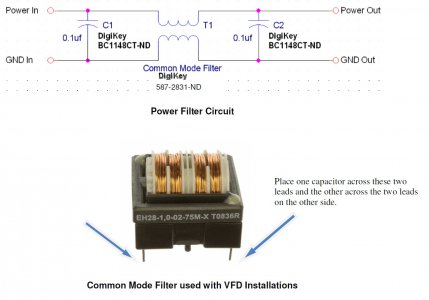I thought I'd be smart and get a 10v operable digital RPM gauge (chinese) and hook the display inside my vfd control box. It works pretty well, but it appears to be giving my VFD a hard time as I am seeing erratic readings on the display for the VFD - it wavering as if I'm playing with the speed POT (2-3% changes at random). When I unplug the magnetic sensor inside the lathe, the problem goes away. Will powering this off of its own power supply cure the issue, or do these two devices just not play well together in close proximity? My control vfd cable is well shielded, but the tach one was not (10v power ground and signal wires). Does that matter?
I'm thinking about adding a seperate 12v DC supply and changing the tach cable out to a grounded one, but I am not sure where to ground it as my VFD controller cable is grounded at the VFD but (as per the instructions) floating at the control box. So I don't really have a good grounding lug for the tachometer' shielded cable. I do think that it may be grounded by nature of being attached to the lathe via metal bracketry.
I'm thinking about adding a seperate 12v DC supply and changing the tach cable out to a grounded one, but I am not sure where to ground it as my VFD controller cable is grounded at the VFD but (as per the instructions) floating at the control box. So I don't really have a good grounding lug for the tachometer' shielded cable. I do think that it may be grounded by nature of being attached to the lathe via metal bracketry.


